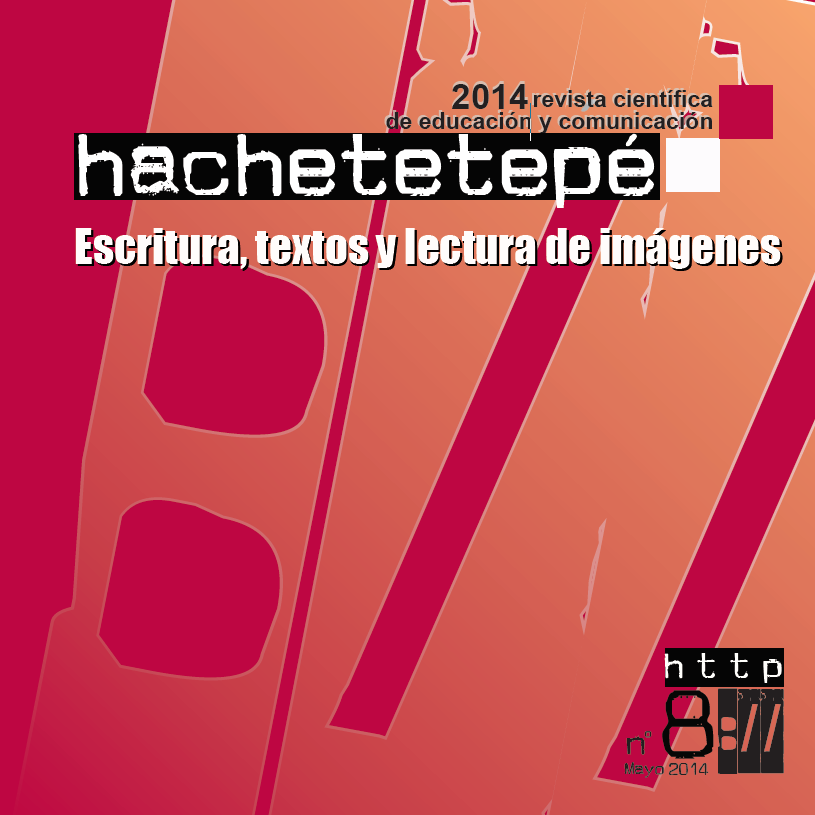The TIC used as motivating agents in there adding habits of secondary school students
Abstract
ICTs are embedded in the XXI century and even in schools. Thus, teenagers have incorporated these resources to their living environment, becoming part of their modus vivendi.In the field of education, reading rates are still pending in education, since teens do not get to see it as an experiential element but as integrated into their academic life.As a result, unifying these two approaches, we propose a plan of reading performance in order to check the role that ICT can play in the reading habits of adolescents in the Secondary stage.
Keywords
Downloads
How to Cite
License

This work is licensed under a Creative Commons Attribution-NonCommercial-NoDerivatives 4.0 International License.
Those authors who have published with this journal, accept the following terms:
- They will retain their copyright and guarantee the journal the right to first publication of their work, which will simultaneously be subject to the Creative Commons Attribution License . They may be copied, used, disseminated, transmitted and publicly displayed, provided that the authorship, url, and magazine are cited, and are not used for commercial purposes. No derivative works are allowed.
- They may adopt other non-exclusive license agreements for the distribution of the published version of the work (e.g., deposit it in an institutional telematic archive or publish it in a monographic volume) provided that the initial publication in this journal is indicated.
- Disseminate your work through the Internet (e.g., in institutional telematic archives or on your website) once the manuscript is accepted, which may lead to interesting exchanges and increased citations of the published work. (See The effect of open access).
Hachetetepé. Scientific journal of education and communication does not charge a fee for the submission of manuscripts or for the publication of its articles.
References
Amar, V. (2008). Tecnologías de la información y comunicación, sociedad y educación (Sociedad, e-herramientas, profesorado y alumnado). Madrid: Tébar.
Amar, V. (2006). Las nuevas tecnologías aplicadas a la educación. Cádiz: Servicio de Publicaciones de la Universidad de Cádiz.
Barroso, J. y Cabero, J. (2010). La investigación educativa en TIC: visiones prácticas. Madrid: Síntesis.
Bernal, C. y Angulo, F. (2013). “Interacciones de los jóvenes andaluces en las redes sociales”. En Comunicar, 40; 25-30.
Cassany, D. (2012). En_ línea. Leer y escribir en la red. Barcelona: Anagrama.
Colás, P., González, T. y De Pablos, J. (2013). “Juventud y redes sociales: Motivaciones y usos preferentes”. En Comunicar, 40; 15-23.
Colomer, T. (Coord.) (2008). Lecturas adolescentes. Barcelona: Graó.
Mcmillan, J. H. y Schumacher, S. (2005). Investigación educativa. Pearson Educación: Madrid.
INFORME PISA 2009 (2010). Organización para la Cooperación y el Desarrollo Económico. http:/www. mecd.gob.es/inee /estudios/pisa.html (Recuperado el 17 de mayo de 2013).
Larrañaga, E, Yubero, S. y Cerillo, P. (2008). Estudio sobre hábitos de lectura de los universitarios españoles. Madrid: Fundación SM.
Lara, T., Zayas, F., Arrukero, N.A. y Larequi, E. (2009). La competencia digital en el área de Lengua. Barcelona: Octaedro.
MINISTERIO DE EDUCACIÓN Y CIENCIA: Real Decreto 10/1995, de 29 de diciembre, por el que se establecen las enseñanzas mínimas correspondientes a la Educación
Secundaria Obligatoria, Boletín Oficial del estado, 5 de enero nº5.
Palomo, R., Ruiz, J. y Sánchez, J. (2008). Enseñanza con TIC en el siglo XX. La escuela 2.0. Madrid: Editorial MAD.
Perdomo, C. (2005). Animación a la lectura en Educación Secundaria, análisis y
propuestas. Tenerife: Universidad La Laguna.
Prensky, M. (2001): “Digital natives, digital inmigrants”.En On the Horizon. 5; 1-6.
Solé, I. (1999). Estrategias de lectura. Barcelona: Editorial Grao.
Sánchez-Migallón Carreras, A. Mª. y Sánchez-Migallón Carreras, Mª del C. (2011). “Análisis e influencias de las tic y los libros como material para el fomento de la lectura en el ámbito socio-cultural, familia y escolar” En I Congreso Internacional Virtual de Educación Lectora.






